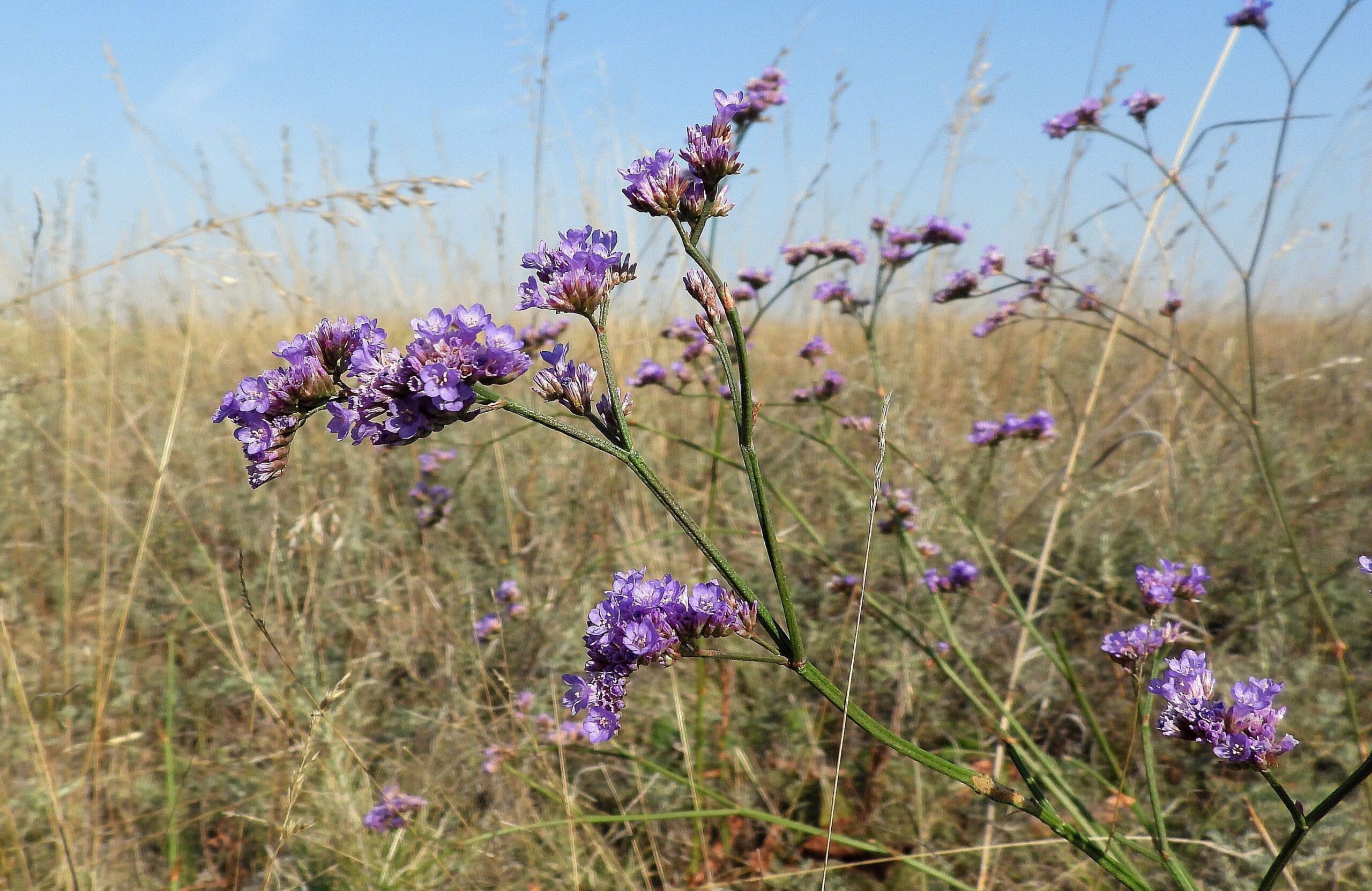Hungarian Sea Lavender (Limonium gmelinii ssp. hungarica) might be a heraldic plant of Hungarian salt marshes, one of the most characteristic perennial flowering plants of the plains east of the Tisza, capable of turning the entire steppe purple in late summer.
It is a native plant of steppes and alkali grasslands located at the Carpathian Basin. The plant belongs to the family Plumbaginaceae found in the order Caryophyllaceae . Itstarts to fluorish in July, but flowering is the most intense in the second half of August and lasts for weeks.
Hungraian Sea Laveneder is considered to be a common species of the Hungarian salt steppes, especially in the Tiszántúl region. In many places, it can be found on the sides of flood protection embankments. As many salt-tolerant species have recently begun to spread along roadsides due to road salting, Hungarian Sea Lavender can also be found alongside with highways or in the parking lots of large stores in urban areas.
It is a salt-tolerant, resistant plant that is able to withstand extreme weather conditions and can sprouts even when precipitation is low. Sea Levender’s leathery leaves store water well, and its roots penetrate deep into the soil, protecting the plant from drying out in extremely dry habitats or weather conditions.
Although Hungarian Sea Lavender is not a protected plant, it must not be collected in nature reserves, just like any other plant!
